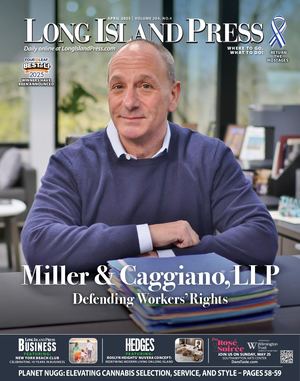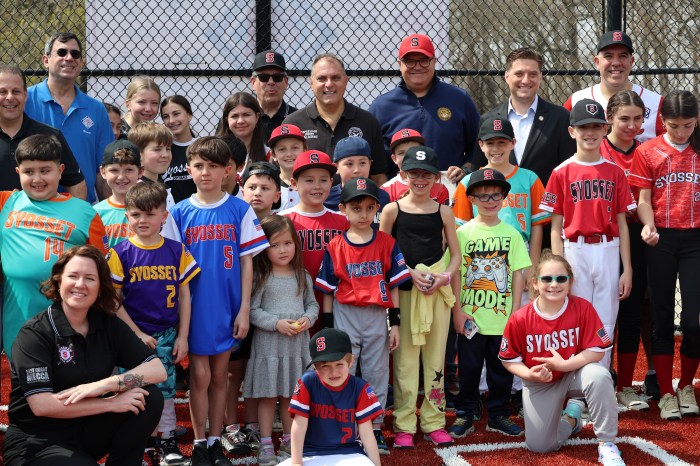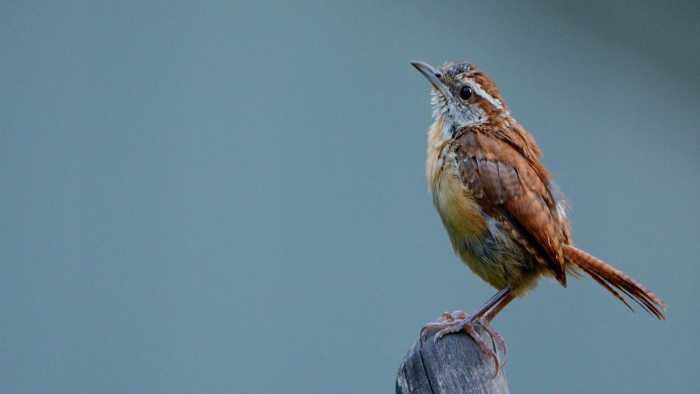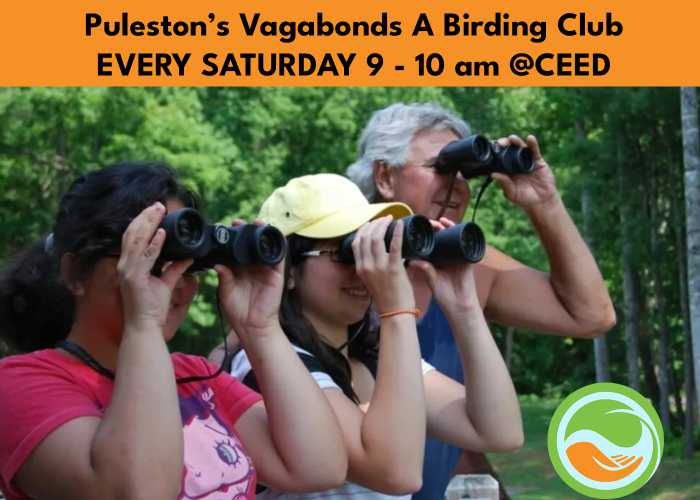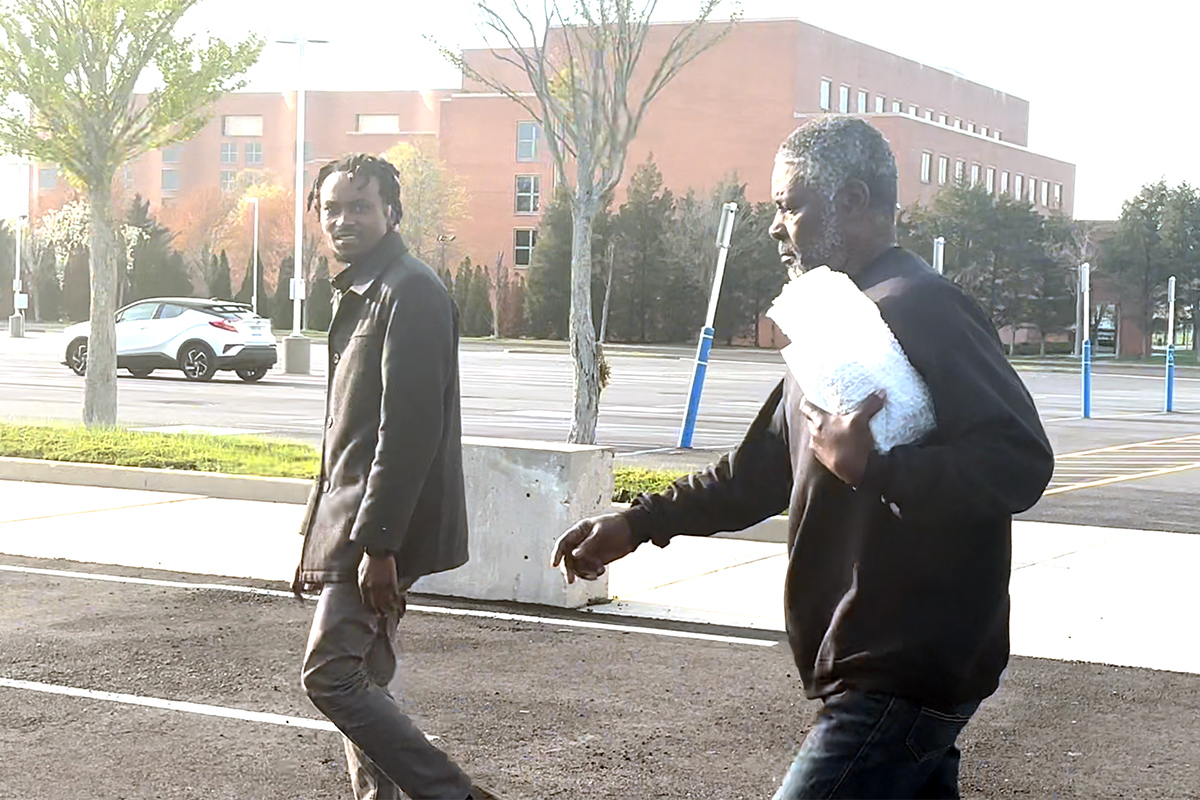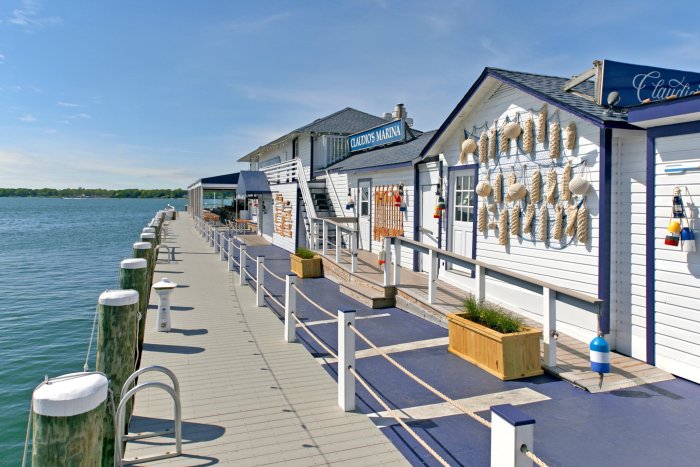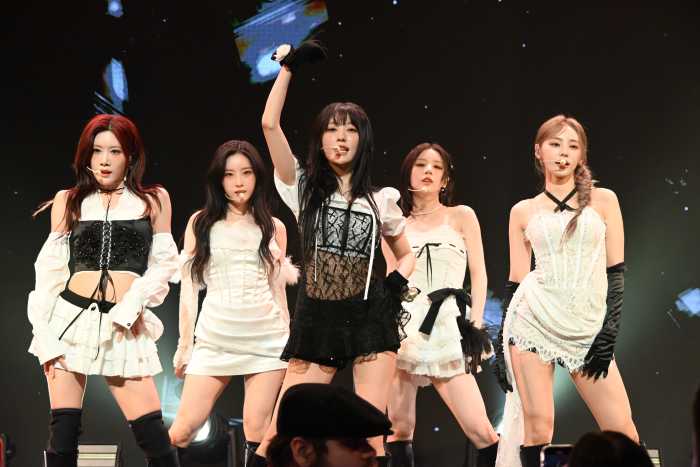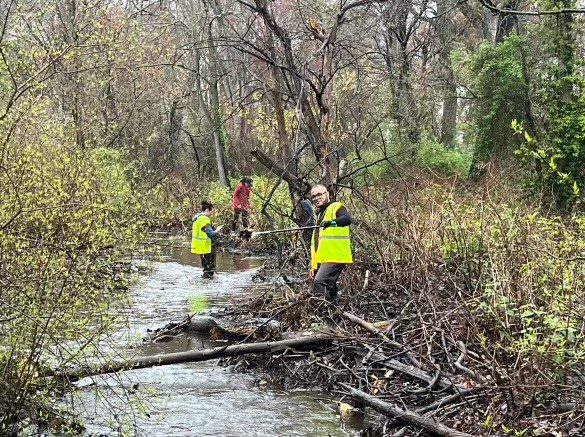Exhibit at Planting Fields on Cocktail Culture running now through September 30
It was a sold-out affair as Coe Hall Mansion, at Planting Fields Arboretum in Oyster Bay, held a preview party for the opening of their new exhibition “Cocktail Culture: the Gold Coast Years From Prohibition To 1960,” on March 30. The exhibit is running now through Sept. 30.
Henry Joyce, Planting Fields Foundation (PFF) executive director, has once again created a well-designed exhibit space in Coe Hall Mansion’s Great Hall. He summed up the new show saying he would like visitors to come to Planting Fields and see the Cocktail Culture exhibit. “It’s about clothes that would have been worn in the house in the period of the house’s heyday, 1920 through 1960.” There are great flapper clothes from the ‘20s and wonderful clothes from the ’30s, ’40s and ’50s. And included are marvelous accessories, shoes, bags and great cocktail hats, including one of Mr. Joyce’s favorites, a small green cocktail hat by Elsa Schiaparelli.
“We borrowed all the clothing from an important collector, Jimmy Raye of Salem, Massachusetts, who has a vast collection of special clothes,” said Mr. Joyce. “That includes the Salvatore Ferragamo shoes from the 1930s, from the period after he returned to Italy, after making wonderful shoes in Hollywood for movie stars in the ’20s!
“Here we are on Long Island, with wonderful stories about that period that are uniquely Long Island stories.” And, Mr. Joyce knows how to tell those stories. The exhibit illustrates the history of prohibition and the Coes’ involvement with avoiding the restrictions on liquor. W.R. Coe stockpiled champagne and also whiskey — for his favorite cocktail, the Manhattan. The show tells of the creation of the speakeasy, the repeal of prohibition and the beginning of the cocktail culture. In 1918 W.R. Coe spent $10,021.65 on liquor (today about $143,834), in 1919, he spent $25,328.07 (today about $316,376), for a grand total of $35,349.72 (today over $441,000). During the same period of time, speakeasies in the village of Oyster Bay were notorious, with several of them conveniently located near the waterfront. A letter to The New York Times in 1924 took the police to task for permitting such “goings on” to continue
Preview Review
Phillip Blocklyn, Oyster Bay Historical Society executive director and his wife, Jacqueline Blocklyn, the director of the School of Domestic Arts at the historical society, attended the preview party. He said, “Jackie and I went through the exhibit and then went upstairs for the refreshments. There was a table of pre-made cocktails for people to sample. [Cocktails for women, at the time, were brightly colored drinks – the Pink Lady and the Brandy Flip. For men, cocktails were more restrained – the Manhattan, Old-Fashioned, or Martini.]
“The exhibit was very good. I really enjoyed it. I like the way each costume was accessorized. There were fantastic cocktail dresses and shoes and hats. Visually it was exciting. I give Henry a lot of credit for doing a great job. I was very happy with all the (easily-readable) exhibit signs and their explanations.
“The cocktail dress was created in that era. There were no cocktails themselves, before that time. Women were allowed to drink in public and therefore needed special dresses to wear. It was so glamorous,” Mr. Blocklyn commented.
Fashion Industry Chat
Laura V. Dougherty, Brookville historian, met Jimmy Raye of Salem, Massachusetts, a place which he categorized as being “where the witches come from.” She worked for Ralph Lauren, and the two were a good mix as they talked about how vintage clothing can be an inspiration for today’s designers.
“Just look at Kate Spade,” said Mr. Raye.
Ms. Dougherty said, “My friend, Rony Zeidan, president of RO NEW YORK, does that for Ralph. He is the owner of a forward thinking design and advertising agency, and works with luxury brands such as Ralph Lauren, Chopard, Joseph Abboud and Madonna.
“We worked together at Ralph Lauren Fragrances and translated Ralph’s vision of lifestyle into the fragrance world. From polo and the sporting life, to jet set, to island travels, to the southwestern American feel, Ralph invites the consumer to be part of it… and seldom shows the product itself. It’s just amazing.”
“It is so inspiring,” Mr. Raye said of the exhibit items, “in the way that the clothes were made. The beading, the shoes, the hats, the hand stitched gloves and the purses were a thing in themselves. And Ralph is now doing cloches, like in the Gatsby movies. They had such style in that era.”
Mr. Raye has a background in the arts. “I was a dancer and I was in theater. I was at the Boston Ballet and taught ballet at Radcliff, and did historical and modern works. I opened the first Pilates studio in New York and then opened another on the north shore about 15 years ago. They didn’t know about Pilates then. I did because I taught ballet.”
He went on to say, “People love seeing things like this. They get joy out of it. When they come to my Salem house, I have everything displayed in big closets and people love to see the pieces.”
His collection arrived at Planting Fields in a large truck. He said, “I included my mannequins in the show because they too, are period and are important in showing the work to best advantage. I consider that clothing is art,” he said.
“The cocktail culture was so glamorous. And all the accoutrements of drinking were very stylish and fashion oriented, the cocktail mixer and the glasses themselves. The making of the drink at that time was a ritual. This exhibit is informative and good to look at,” declared Mr. Raye.
“I’ve been collecting since the ’70s, because as a dancer, I would put on shows and use the vintage clothes to accent the period. Some were used for display only. Those that were strong enough were used to pose in for a scene. I collected them because they were art. Just consider all the fine details in the construction. And, you learn history from clothing as well,” Mr. Raye offered.
Mr. Blocklyn summed up the show saying, “It’s just nice when a show is great and worth going to. People were all looking at the items in the exhibit. There was a lot of attention being paid to everything. And, there was standing-room only!”
The Cocktail Culture exhibition can be seen every day, from 11:30 a.m. to 3:30 p.m. now through Sept. 30. Starting with the 1920s, the show is a veritable feast for the eyes and includes fabulous clothes by some of the greatest designers of their time such as Mariano Fortuny and Elsa Schiaparelli. There are extraordinary works of art for women’s feet made by Salvatore Ferragamo in the 1930s and by Dalman and I Miller. Also included are beautiful hats by Tatiana of Saks 5th Avenue and by Adrian of Hollywood. For more information, please call 922-8676.
